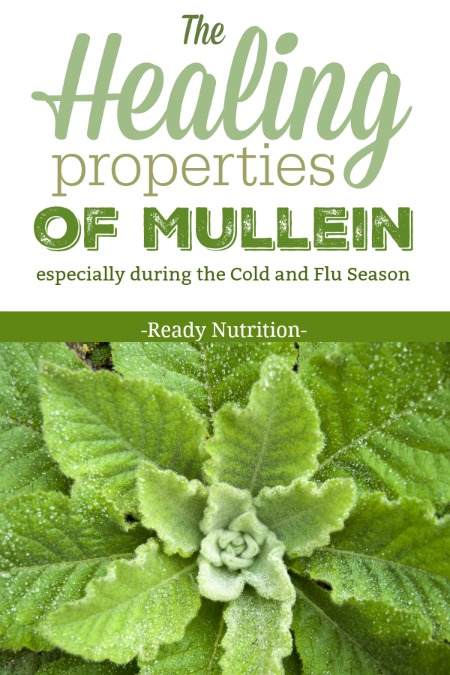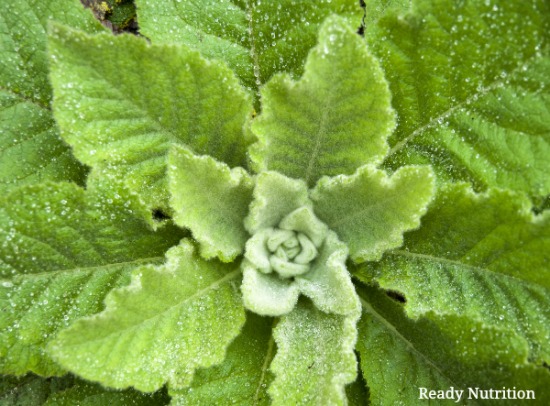The Healing Properties of Mullein – Especially During the Cold and Flu Season
By Jeremiah Johnson
Mullein is a pretty easy herb to come by. It grows in “waste” places; that is to say, in arid, rocky, or sandy soil without many nutrients. It is a pretty common sight all over the United States and is actually considered a nuisance by many, although it was brought to the U.S. from Europe in the 1700s for its medicinal value. Its scientific name is Verbascum thapsus,and it is a biennial, meaning that it takes two years to complete its life-cycle.
It is available in your better health-food stores and herbal shops. The entire plant can be used: leaves, flowers, and roots. The flowers and leaves are the parts that are valuable for colds and flu. It can be taken as an infusion (a tea), or dried (1 ounce). The leaves can also be placed in an infusion/tea at the amount of about an ounce. You can also simmer them for about 10 minutes in milk. These mixtures can be used for a cough.
Widget not in any sidebars
The leaves can be smoked in an ordinary pipe for tobacco to provide relief from inflamed membranes of the respiratory system and will control a hacking cough, asthma, and coughs that are spasmodic. The teas provide a demulcent action, and this means a coating action that will soothe the mucous membranes in the manner of a cough drop.
The herb can also be used for diarrhea, as it is a protectant and astringent that will help to clean out the bowels and intestinal tissues. If you crush the leaves and make a poultice out of it (that is simply put, a moistened “packet” of the herb) you can use it on rashes, boils, sores, and other skin ailments. Mullein lives for a good while, and you can always spot it by its stem that grows vertically from which the flowers bud. The seeds can last for more than a hundred years, which makes it excellent for your seed-saving endeavors.
The flowers are a bright yellow color and can be dried for teas. Mullein contains about 3% mucilage, and it is this that helps with the soothing, demulcent qualities on the mucous membranes that line the nose, mouth, and throat. Ready Nutrition Readers, lend me your ears! [para. Shakespeare] Well, you keep the ears…but when they act up? Mullein is also good for ear infections. Many will tell you to tincture it and then apply a few drops. My method: leave some flowers and leaves in a bottle of olive oil, for about 2-3 weeks after chopping the vegetative matter up finely.
After the wait, you’ll have ear “oil” that is both medicinal and also soothing…I’ve found olive oil to be one of the best carrier oils that you can use. When you make a tea from it, or a poultice, ladies, this will help with a yeast infection…and will be a bit more soothing than other remedies due to its demulcent action as mentioned earlier.
A Clemson University study reported back in 2002 that Mullein is effective against several kinds of bacteria, to include Klebsiella pneumoniae, Staphylococcus aureus, Staphylococcus epidermidis, and Escherichia coli. In case you didn’t know it, Staph aureusis the bacteria found predominantly in everyone’s nasal passages. Its use is only contraindicated in young children for coughs, but for ear infections or for an astringent, it can be used with them. You can find it in leaf, tincture, pill, or capsule form, but this information is given to you in the hopes that you’ll go out next season and find it to make your supplies with as well. JJ out!

Jeremiah Johnson is the Nom de plume of a retired Green Beret of the United States Army Special Forces (Airborne). Mr. Johnson was a Special Forces Medic, EMT and ACLS-certified, with comprehensive training in wilderness survival, rescue, and patient-extraction. He is a Certified Master Herbalist and a graduate of the Global College of Natural Medicine of Santa Ana, CA. A graduate of the U.S. Army’s survival course of SERE school (Survival Evasion Resistance Escape), Mr. Johnson also successfully completed the Montana Master Food Preserver Course for home-canning, smoking, and dehydrating foods.
Mr. Johnson dries and tinctures a wide variety of medicinal herbs taken by wild crafting and cultivation, in addition to preserving and canning his own food. An expert in land navigation, survival, mountaineering, and parachuting as trained by the United States Army, Mr. Johnson is an ardent advocate for preparedness, self-sufficiency, and long-term disaster sustainability for families. He and his wife survived Hurricane Katrina and its aftermath. Cross-trained as a Special Forces Engineer, he is an expert in supply, logistics, transport, and long-term storage of perishable materials, having incorporated many of these techniques plus some unique innovations in his own homestead.
Mr. Johnson brings practical, tested experience firmly rooted in formal education to his writings and to our team. He and his wife live in a cabin in the mountains of Western Montana with their three cats.
This information has been made available by Ready Nutrition



